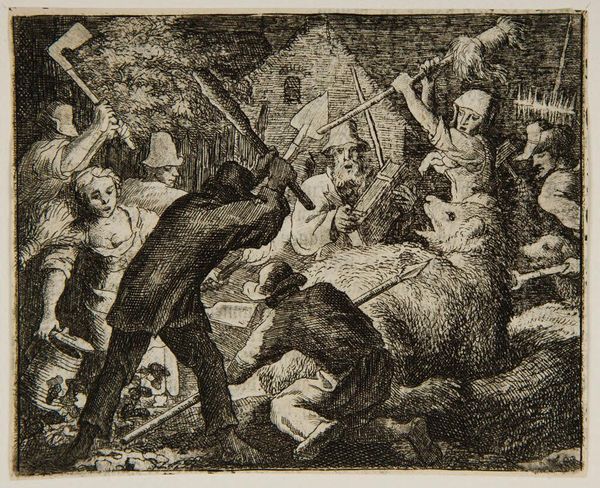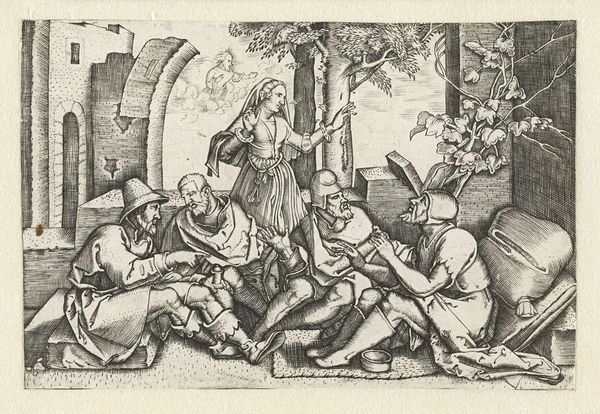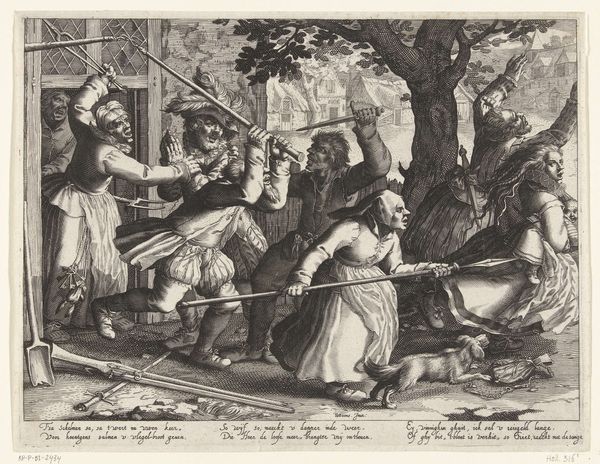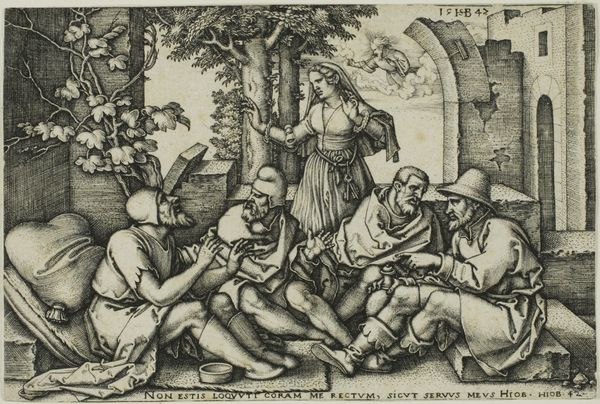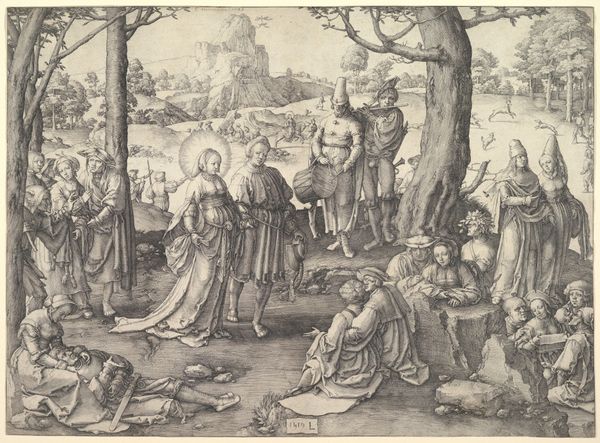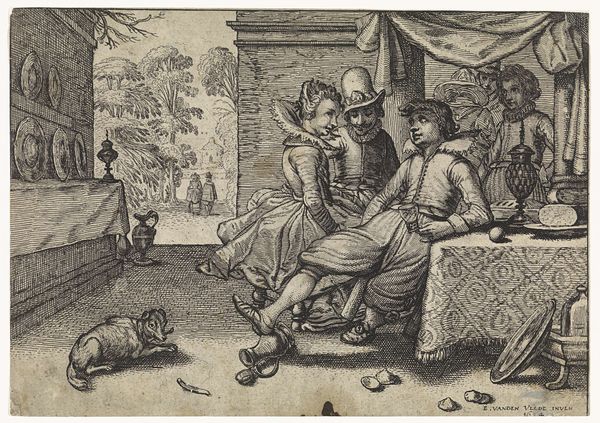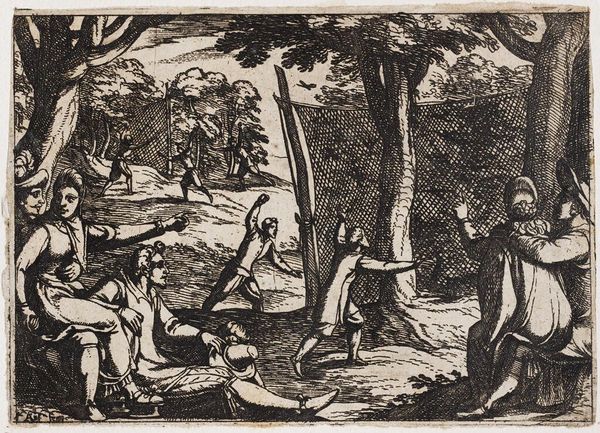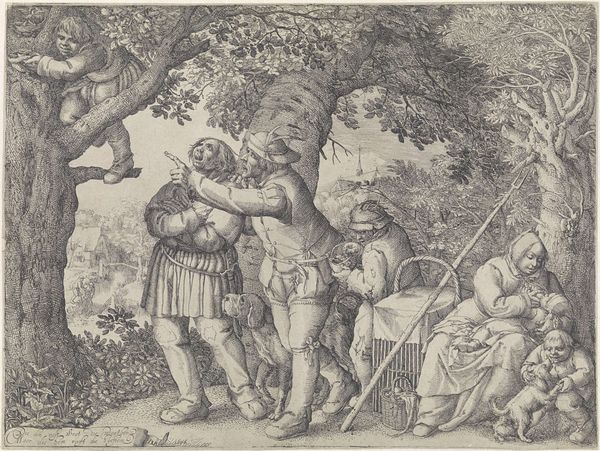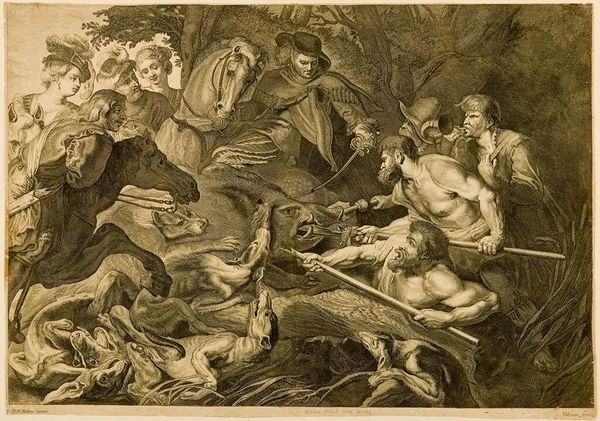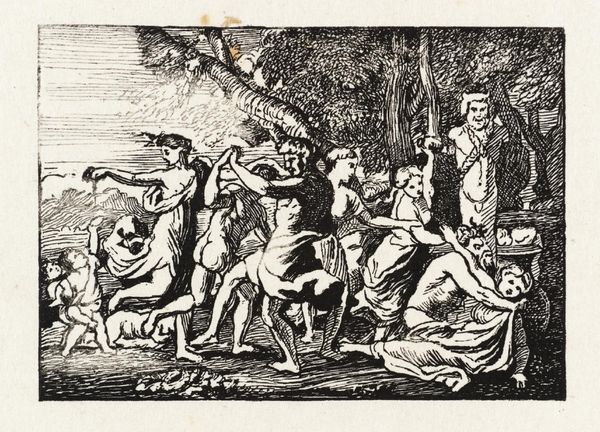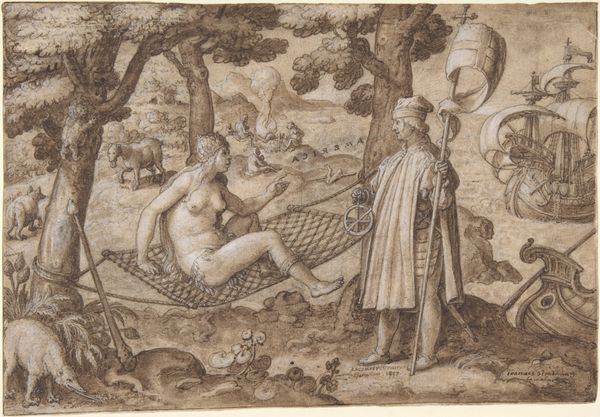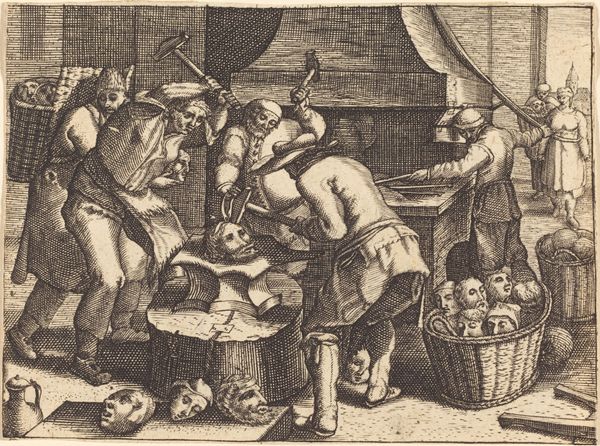
painting, oil-paint
#
narrative-art
#
painting
#
oil-paint
#
figuration
#
christianity
#
history-painting
#
italian-renaissance
#
christ
Dimensions: 100 x 68.1 cm
Copyright: Public domain
Editor: This is Giovanni Bellini’s “The Assassination of St. Peter Martyr,” painted around 1509. The figures are so striking in their costumes, made of oil. What stands out to you about it? Curator: Looking at the work through a materialist lens, it’s less about the religious narrative itself and more about how Bellini deploys material culture to construct power and meaning. Consider the assassin's armor – the craftmanship, the expense of those materials. This wasn’t mass produced. Think about what its presence communicates about social hierarchies and systems of patronage at the time. Editor: So, the costuming indicates who has the upper hand? Curator: Exactly. Notice the labor invested not just in producing those garments and weapons, but also in the very *act* of violence depicted. Peter’s simple monastic robes contrast with the extravagant armor. Bellini uses the costuming, the expense of the oil pigments themselves, as symbols. Can you infer how art production was understood and what social codes it mirrored at that moment in Renaissance Italy? Editor: So the painting itself becomes a commodity, reflecting existing power structures through the display of wealth. Are the trees maybe from an important forest in Italy? Is there some environmental material critique to be understood? Curator: Possibly. The location may give viewers in that period an insight on access to resources, land use, economy. Bellini is showcasing not just a story, but also a system. What are the other details on resources? Editor: It makes me reconsider narrative painting. I used to think of history paintings as conveying moral or political messages, but there is attention to class structure based on the material details too. Curator: Precisely! It shifts the focus from the saint’s martyrdom to the material conditions that made such an event, and this artwork possible. The making is relevant to the why of it. Editor: Thanks! That offers a really different angle to appreciate this piece and historic narratives more widely!
Comments
No comments
Be the first to comment and join the conversation on the ultimate creative platform.
